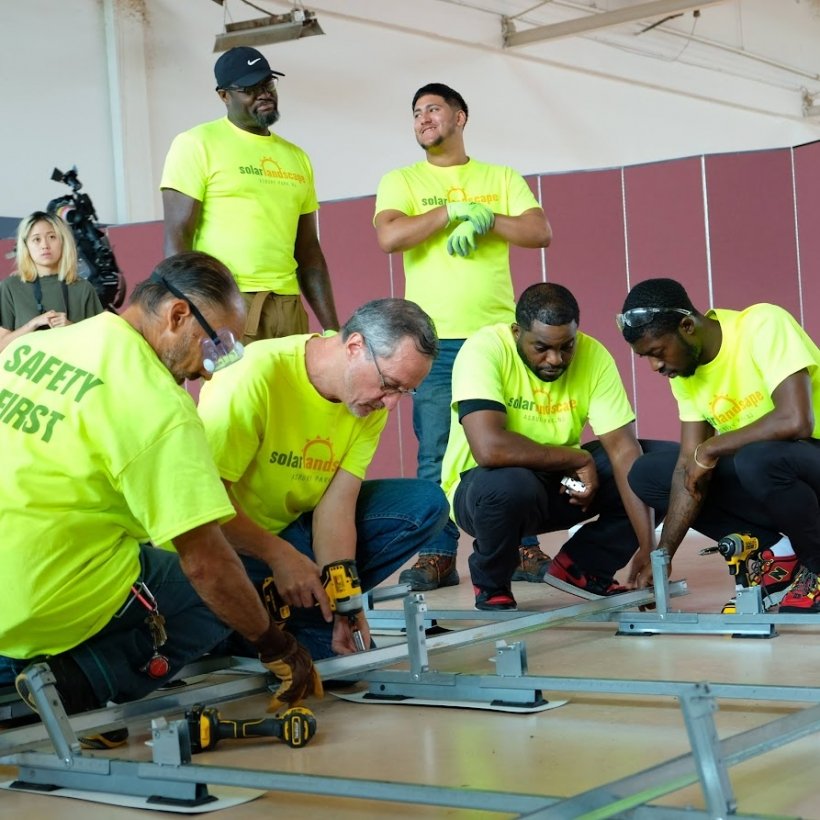Solar Landscape, a leading New Jersey solar developer, faced a significant market challenge when it ventured into community solar. It took a lot of time and resources to acquire and manage community solar subscribers, especially those from low- or moderate-income households. They kept up and took the time to learn about the communities where they could invest. The results were outstanding.
Corey Gross and Shaun Keegan, Solar Landscape’s cofounders, hail from Monmouth County in New Jersey. The pair founded Solar Landscape in 2012, as rooftop solar was rapidly growing in New Jersey. Solar Landscape began as a solar installation company and later became a vertically integrated operator in rooftop solar, including commercial, industrial, school, and municipal. Solar Landscape has also been a leader in job training and has educated most of its employees in-house.
New Jersey’s Community Solar Energy Pilot Program was launched in 2019 to encourage community solar adoption. This program encouraged projects with LMI subscribers involved with local community organizations or included only subscribers from one municipality. It was challenging, as New Jersey is home to 565 towns. Sometimes these communities are separated by just 20 blocks. Solar Landscape’s experience in solar development and its history in New Jersey put it in a strong position for the pilot program.
Solar Landscape recognized that community solar was a more efficient strategy than installing solar panels on hundreds of roofs. Their experience managing and installing solar panels was a great asset to solar community projects. However, they had to find new strategies and resources to meet the requirement that 51% of the energy produced to be distributed to LMI households. They spent $400-$500 per household to subscribe to community solar. This is more than it costs to recruit families for rooftop solar. Traditional methods of acquiring subscribers, such as mailing mailers or hiring private companies that go door-to-door, could have been more successful.
Because of the extensive marketing of third-party energy suppliers, many New Jersey residents were skeptical about community solar. Some of these were more expensive. Solar Landscape could not build trust with the community members and increase the time and money required to convince them to sign up for community solar.
Solar Landscape employed a team of community engagement professionals who helped them build relationships with churches, nonprofits, and other workforce development organizations in the area. This allowed them to communicate the benefits of solar energy to their neighbors and encourage them to sign up. Solar Landscape is a nonprofit company, and they were open about that. However, they also stated their desire to benefit the community.
This engagement helped Solar Landscape fill its subscriptions quickly. Solar Landscape, with 54 solar community projects, is one of the largest clean energy portfolios in the country. It focuses primarily on LMI households.
Solar Landscape used its community-based network partners to add value to the community by incorporating workforce training in every project. Solar Landscape offered training for solar installers to residents. Solar Landscape also used its network of solar companies to connect the graduates with jobs.
Solar Landscape began to give presentations on renewable energy at community colleges, high schools, vocational schools, and vocational schools. The Green Ambassador Program was born. This program allows high school students to take an online course in clean energy and submit a short video about how clean energy can benefit their community. Students could win $20,000 in scholarships.
Solar Landscape believes all solar community developers can benefit from getting to know their local communities and building relationships. These strategies are a significant asset because they produce cleaner energy and more loyal customers and have a lasting effect on the community.
“Community Solar is rapidly maturing nationally in New Jersey and is at an inflection moment. Shaun Keegan, Solar Landscape CEO, said that this is what makes information-sharing important and community-building essential. “Our Solar Landscape team learns from the National Community Solar Partnership members and can share our successes with the NCSP community. This exchange is vital for achieving our common goals in clean energy equity, community solar, and other related areas.








